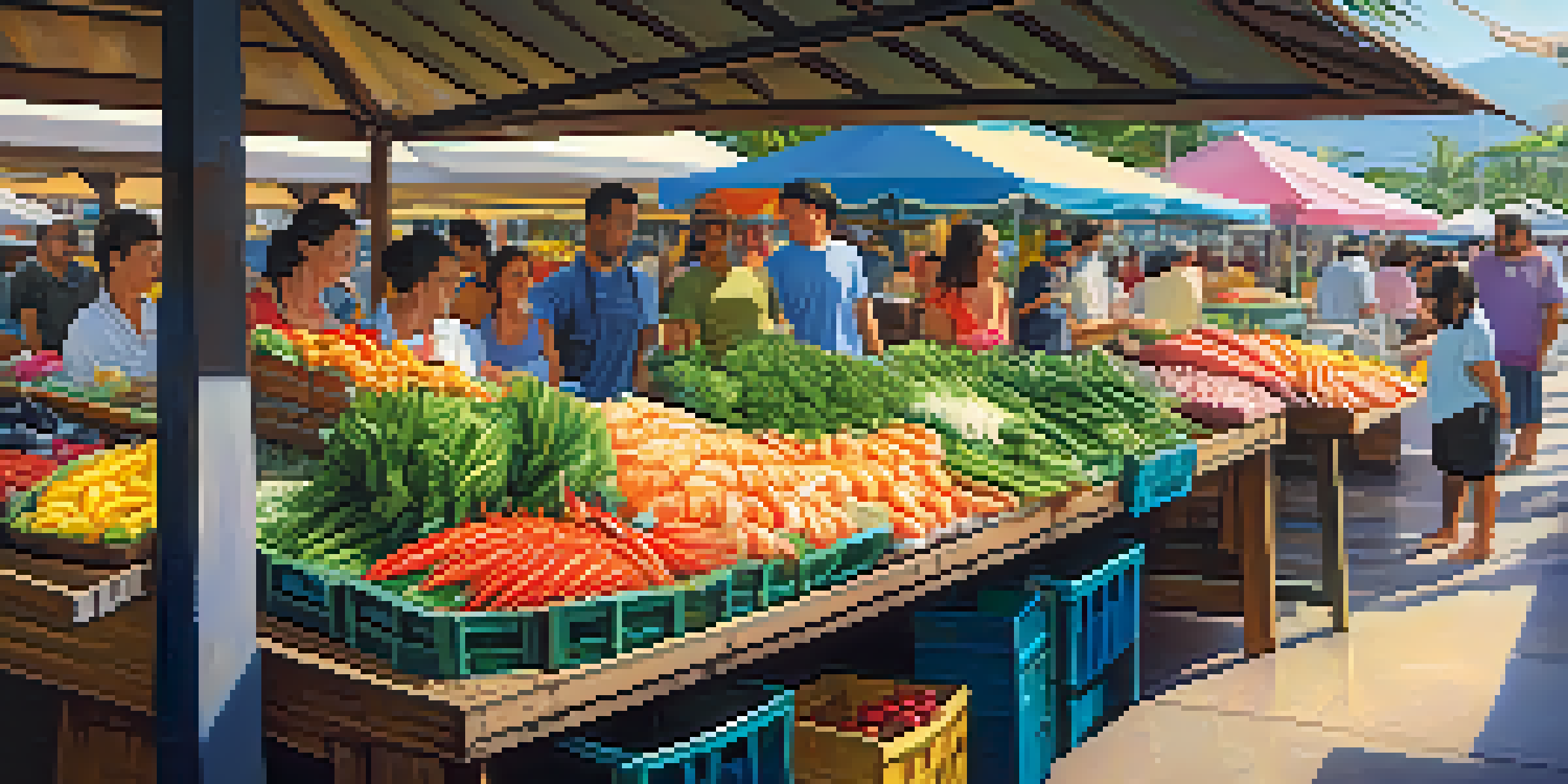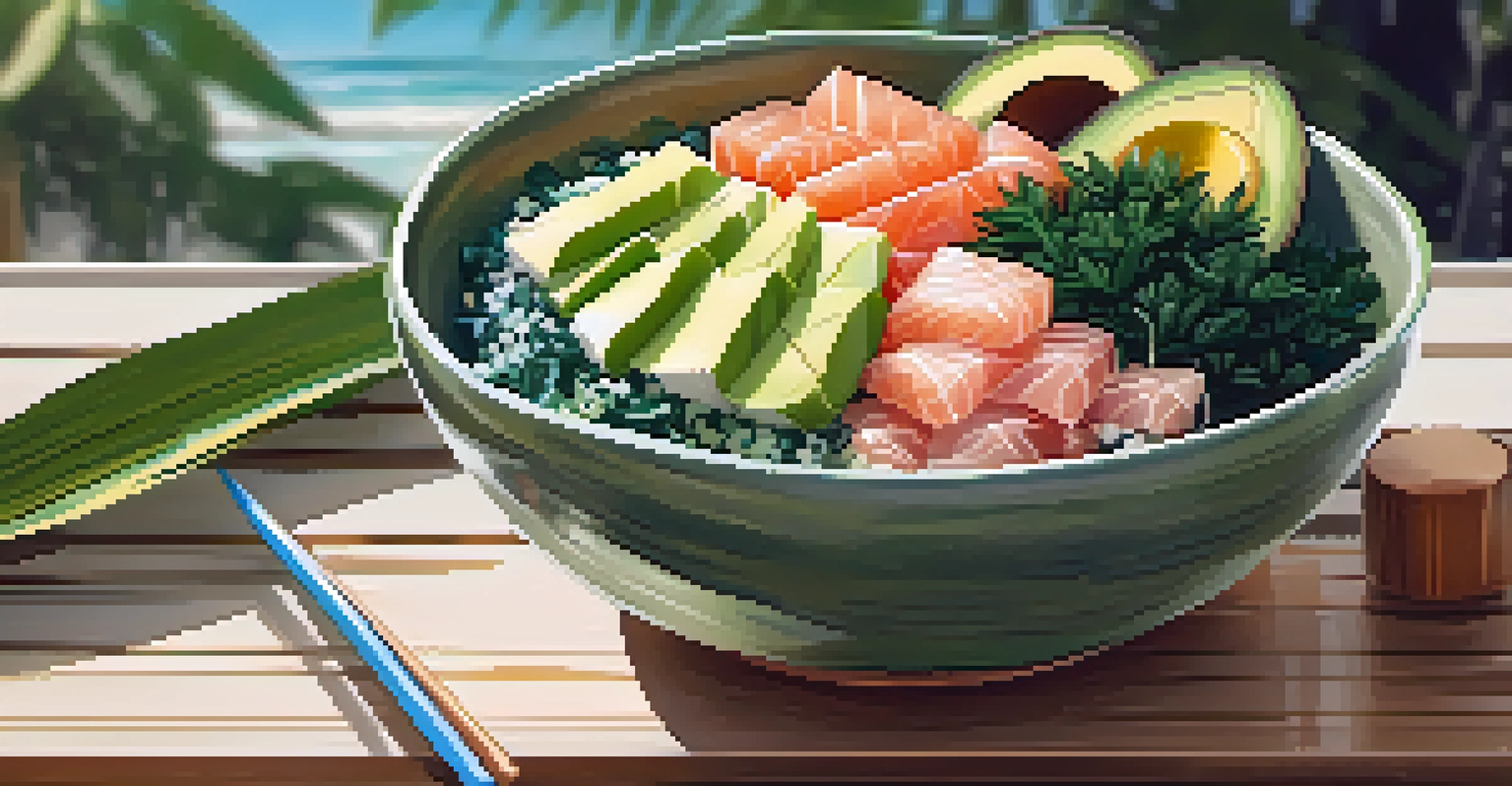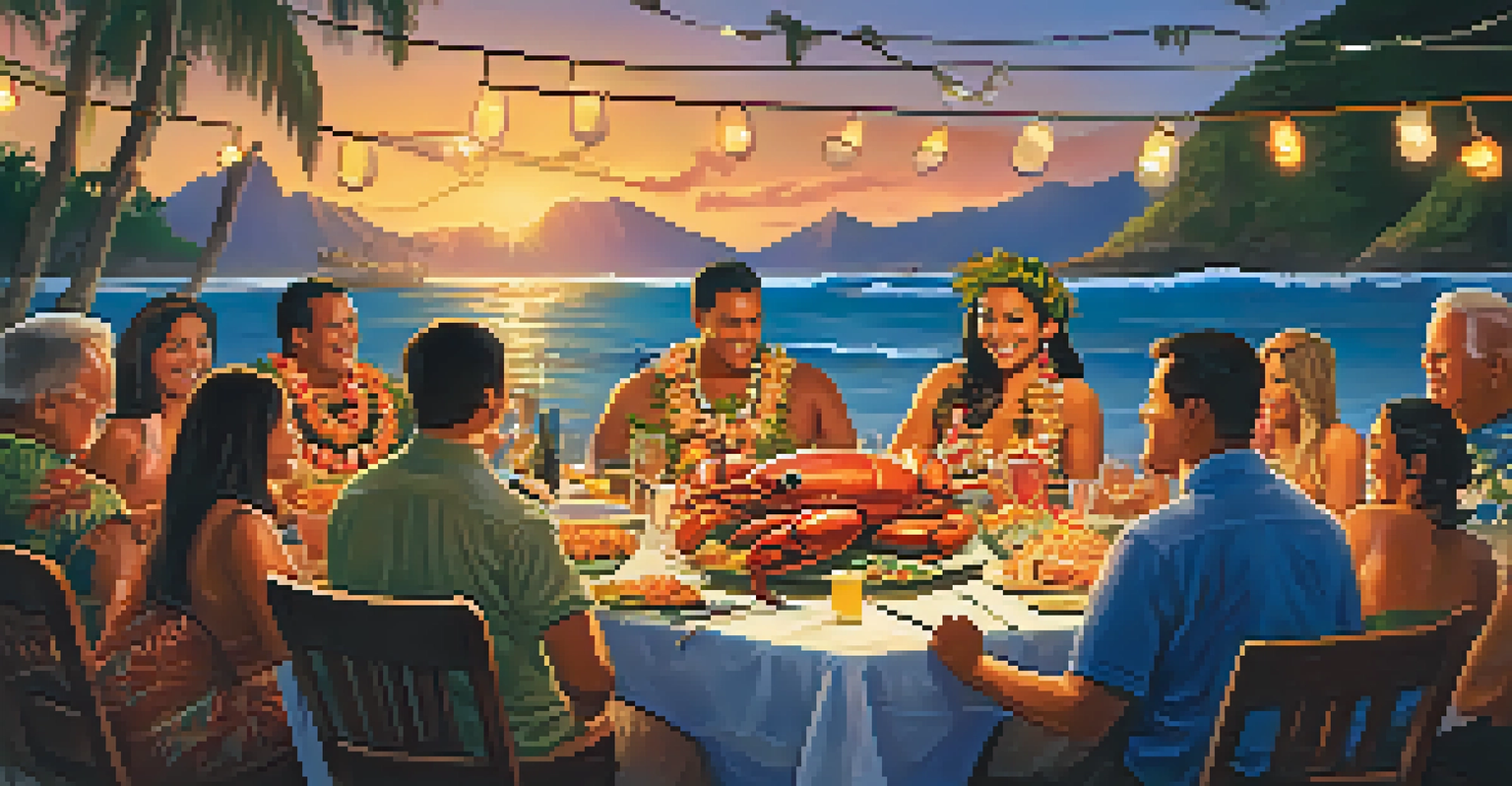The Role of Seafood in Hawaiian Culinary Heritage

Historical Significance of Seafood in Hawaii
Seafood has been a cornerstone of Hawaiian cuisine for centuries, deeply rooted in the islands' history. Early Polynesian settlers relied on the abundant ocean resources, using fishing techniques passed down through generations. These practices not only provided sustenance but also fostered a rich cultural connection to the sea, influencing traditional recipes and communal gatherings.
Food is our common ground, a universal experience.
The historical significance of seafood is reflected in ancient Hawaiian practices, such as the creation of fish ponds, known as 'loko i'a.' These ingeniously designed systems allowed for sustainable fish farming, showcasing the deep respect Hawaiians have for their natural resources. Understanding this history provides insight into how seafood became integral to the Hawaiian way of life.
Today, this legacy continues as modern chefs honor traditional methods while innovating new dishes. The fusion of ancient techniques with contemporary culinary trends reveals the enduring impact of seafood on Hawaii's culinary landscape, making it a subject worthy of exploration.
Popular Seafood Varieties in Hawaiian Cuisine
Hawaiian cuisine is celebrated for its diverse seafood offerings, with each variety contributing unique flavors and textures. From the beloved ahi (tuna) to the sweet and succulent mahi-mahi, seafood plays a starring role on local menus. These fish are not only delicious but also reflect the geographical bounty of the Pacific Ocean surrounding the islands.

Another popular option is poke, a traditional dish made from cubed raw fish, typically seasoned with soy sauce, sesame oil, and seaweed. This dish has gained international fame, yet its roots remain firmly planted in Hawaiian culture. Poke showcases the freshness of local seafood while allowing for endless variations, making it a go-to choice for locals and visitors alike.
Seafood's Cultural Importance in Hawaii
Seafood has been a vital part of Hawaiian heritage, reflecting the islands' history and community values.
Crustaceans like shrimp and crab also hold a place of honor in Hawaiian dishes, often featured in festive celebrations. Whether grilled, sautéed, or incorporated into hearty stews, these seafood varieties embody the spirit of aloha and community found in Hawaiian culinary traditions.
Sustainable Fishing Practices in Hawaii
Sustainability is a growing concern in the culinary world, and Hawaii is no exception. The islands' unique ecosystems require careful management of fishing practices to ensure that seafood remains available for future generations. Local fishermen often adhere to traditional methods that prioritize environmental stewardship, such as catch limits and seasonal fishing.
The culture of a people is a reflection of their cuisine.
Organizations and initiatives dedicated to preserving marine life play a crucial role in promoting sustainable fishing. These efforts not only protect fish populations but also support local economies and communities that rely on fishing for their livelihoods. By choosing sustainable seafood options, diners can enjoy a delicious meal while contributing to the health of the ocean.
As awareness of sustainability continues to rise, many Hawaiian chefs are committed to sourcing their seafood responsibly. This commitment enhances the dining experience, as guests can feel good about their choices while savoring the rich flavors that Hawaii has to offer.
The Influence of Seafood on Hawaiian Festivals
Seafood is often at the heart of Hawaiian festivals, where food and culture intertwine in vibrant celebrations. Events like the Merrie Monarch Festival and various local luaus showcase the culinary diversity of the islands, with seafood taking center stage. These gatherings not only highlight traditional dishes but also honor the community's connection to the ocean.
At these festivals, attendees can enjoy a variety of seafood dishes prepared in unique ways, from grilled fish to elaborate poke platters. The communal aspect of sharing meals strengthens familial bonds and fosters a sense of belonging among participants. This celebration of seafood reflects the Hawaiian value of 'ohana, or family, which is central to the culture.
Sustainability in Fishing Practices
Local fishermen prioritize sustainable fishing methods to protect marine ecosystems and ensure seafood availability for future generations.
Moreover, these festivals serve as a platform for educating attendees about sustainable fishing practices and the importance of preserving marine ecosystems. By incorporating educational elements, festivals help foster a greater appreciation for seafood and its role in Hawaiian heritage.
The Art of Preparing Seafood in Hawaiian Cuisine
Preparing seafood in Hawaiian cuisine is an art form that emphasizes freshness and simplicity. Traditional methods often involve marinating fish with local ingredients such as citrus, ginger, and soy sauce to enhance flavors while showcasing the natural taste of the seafood. This approach aligns with the Hawaiian philosophy of 'ono,' meaning delicious, which encourages appreciation for quality ingredients.
Techniques like grilling, steaming, and raw preparation are commonly used in Hawaiian seafood dishes, allowing the natural flavors to shine through. For instance, the process of creating poke involves careful handling and precise seasoning, transforming fresh fish into a dish that is both visually appealing and satisfying. This attention to detail reflects the cultural significance of food in Hawaiian society.
As modern chefs experiment with fusion cuisine, they often incorporate global flavors while paying homage to traditional preparation methods. This blending of influences results in innovative dishes that continue to celebrate the rich heritage of seafood in Hawaiian culinary culture.
Seafood's Role in Community and Family Gatherings
In Hawaiian culture, food is more than just sustenance; it is a vital component of social connections and family gatherings. Seafood dishes are often prepared for celebrations, potlucks, and family reunions, creating opportunities for bonding and sharing stories. The act of cooking and enjoying seafood together fosters a sense of togetherness that is cherished in Hawaiian society.
Special occasions, such as birthdays and holidays, frequently feature seafood as the centerpiece of the meal. For instance, a traditional luau may include a whole roasted pig alongside a variety of seafood dishes, highlighting the importance of sharing food in building relationships. These gatherings reflect the value placed on community and the joy of coming together over a shared meal.
Seafood Celebrates Community Bonds
In Hawaii, seafood is central to family gatherings and festivals, fostering connections and honoring cultural traditions.
Moreover, seafood serves as a bridge between generations, with recipes handed down through families. Each dish carries its own history and significance, connecting the past with the present. This intergenerational exchange enriches the culinary landscape of Hawaii, ensuring that seafood remains a beloved part of the islands' heritage.
The Future of Seafood in Hawaiian Culinary Arts
As the culinary landscape continues to evolve, the future of seafood in Hawaiian cuisine holds exciting possibilities. With an increasing focus on sustainability and environmental awareness, chefs are reimagining how seafood is sourced and prepared. This shift not only benefits the ocean but also elevates the dining experience by prioritizing quality and freshness.
Emerging trends such as aquaculture and innovative fishing practices are gaining traction in Hawaii. These methods offer sustainable alternatives to traditional fishing, ensuring that seafood remains abundant while minimizing environmental impact. As chefs embrace these innovations, they contribute to a more sustainable future for the culinary arts in Hawaii.

Additionally, the fusion of global flavors with traditional Hawaiian seafood dishes continues to captivate diners. This blending of cultures not only enhances the culinary experience but also celebrates the diverse influences that shape Hawaii's rich food heritage. With each new dish, seafood remains a beloved component of Hawaiian culinary arts, ensuring its place in the future.